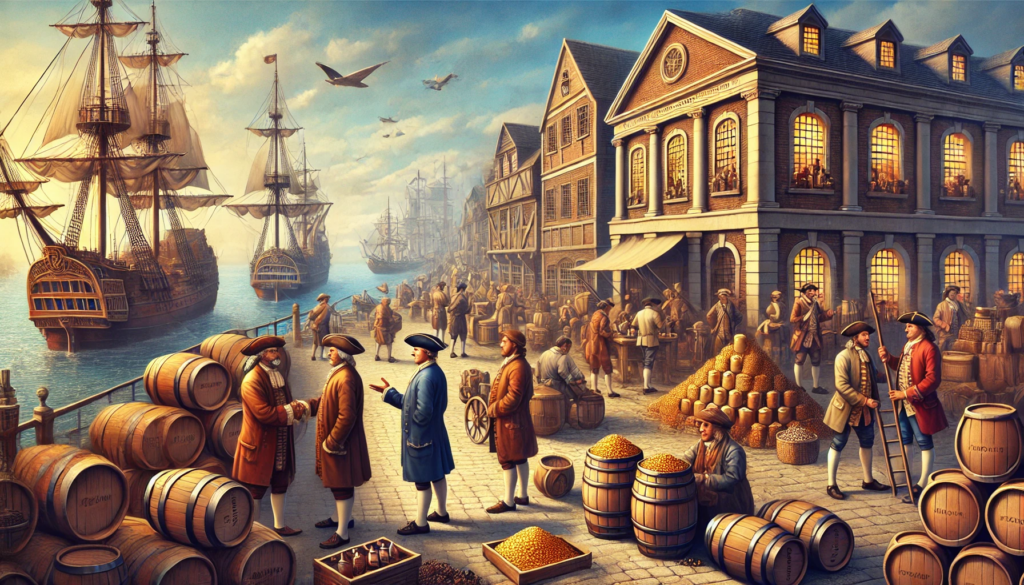O mercantilism was the main economic policy adopted by European countries between the 15th and 18th centuries. Its aim was to strengthen the state by accumulating wealth, especially precious metals, and controlling trade.
The countries that adopted this practice believed that a nation's prosperity depended on exporting more than it imported, guaranteeing a positive balance of trade. This economic system influenced maritime expansion, colonialism and the exploitation of natural resources in various parts of the world.

What was mercantilism?
Mercantilism was a set of economic practices that placed the state as the major controller of the economy. Rulers implemented protectionist policies to prevent money from leaving the country, as well as encouraging domestic production and trade with the colonies. Gold and silver were seen as symbols of power, and countries did everything they could to accumulate them, including exploiting colonized territories and imposing strict trade rules.
Main characteristics of mercantilism
1# Accumulation of precious metals (metalism)
Gold and silver were considered to be a country's greatest riches. For this reason, many European countries invested in the exploitation of colonies and the search for precious metals, especially in America. The aim was to keep state coffers full and guarantee economic and military power.
2# Favorable trade balance
Mercantilist countries tried to sell more than they bought, i.e. export more than they imported. This generated a trade surplus, ensuring that more money entered than left the national economy.
3# Economic protectionism
To avoid foreign competition, governments imposed high taxes on imported products and encouraged domestic production. Protectionism strengthened industries and prevented money from being spent on products from other countries.
4# Colonialism and exploitation of the colonies
The colonies were fundamental to mercantilism, as they supplied raw materials to the metropolis and consumed the manufactured products. The colonizers prohibited the colonies from trading with other countries and exploited their natural resources to the maximum.
5# Commercial monopolies
Many nations created monopoly companies, such as the East India Company, which had the exclusive right to exploit trade in certain regions. These monopolies ensured that only the metropolis profited from colonial trade.
How did mercantilism influence the world?
Mercantilism was one of the driving forces behind the European maritime expansion. Portugal and Spain led the search for new territories, establishing colonies in America, Africa and Asia. This resulted in the creation of large colonial empires and the strengthening of international trade.
In addition, this economic policy boosted the slave trade, as African labor was used to exploit the colonies, especially in the plantations and mines of America. Mercantilism also fomented wars and disputes between European countries, as everyone wanted to secure their trade routes and expand their domains.
The end of mercantilism and the rise of liberalism
The Industrial Revolution and the ideas of economic liberalismadvocated by thinkers such as Adam SmithIn the late 18th century, mercantilism began to weaken. Free trade, competitiveness and the idea that a country's wealth did not depend solely on precious metals gained strength, ushering in a new economic era.
Mercantilism may have been replaced by new economic policies, but its impacts are still visible. Many protectionist practices and trade strategies of modern governments have their roots in this period. After all, who doesn't want to ensure a favorable trade balance and keep their economy strong?
See also: Which films are nominated for Oscars in 2025?
February 22nd, 2025

She has a degree in Literature - Portuguese/English, and is the creator of the Escritora de Sucesso website. As a writer, she seeks to expand everyone's knowledge with relevant information on various subjects. At Trend-Topics, she brings news and content ranging from entertainment to the country's economic situation.





